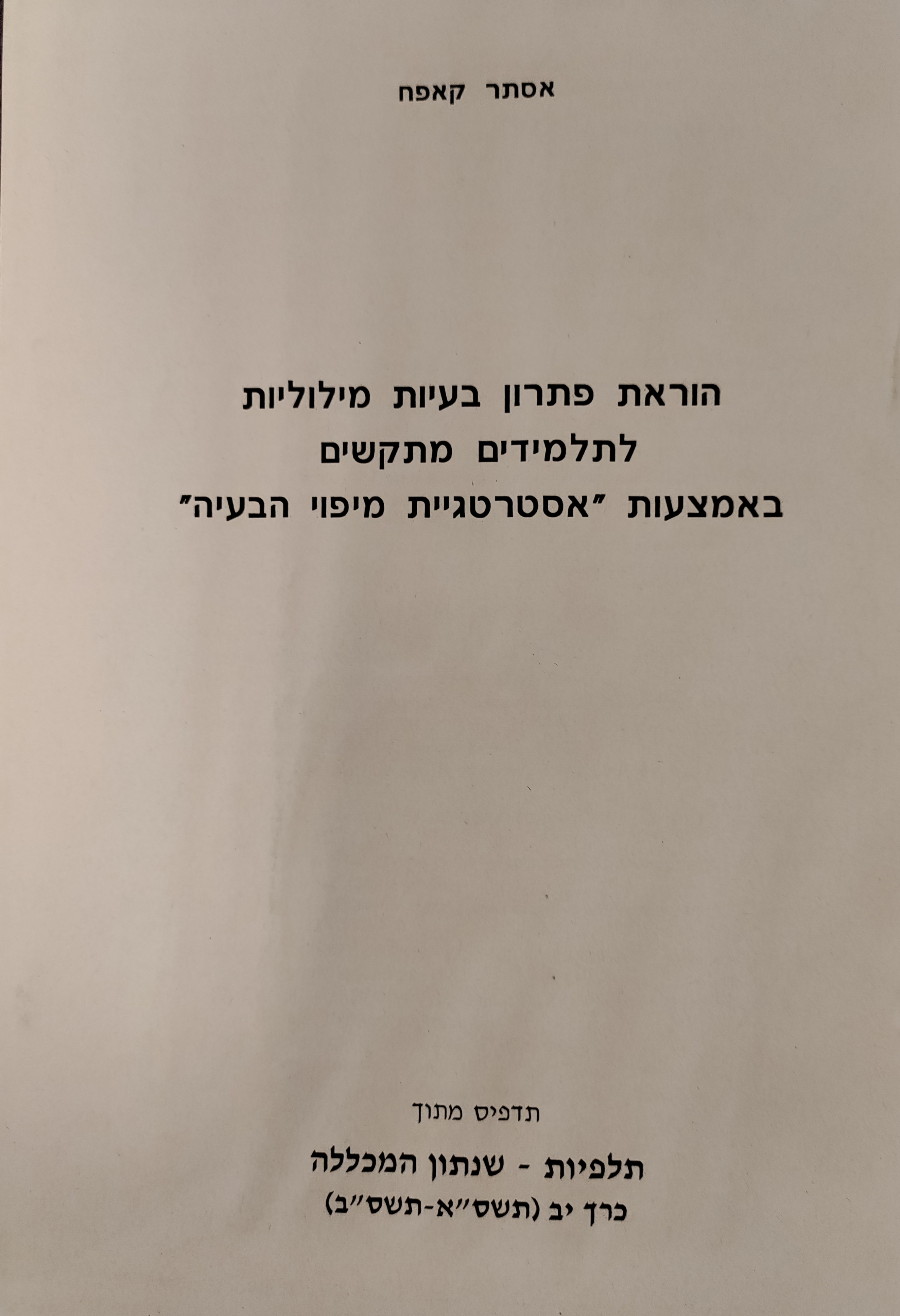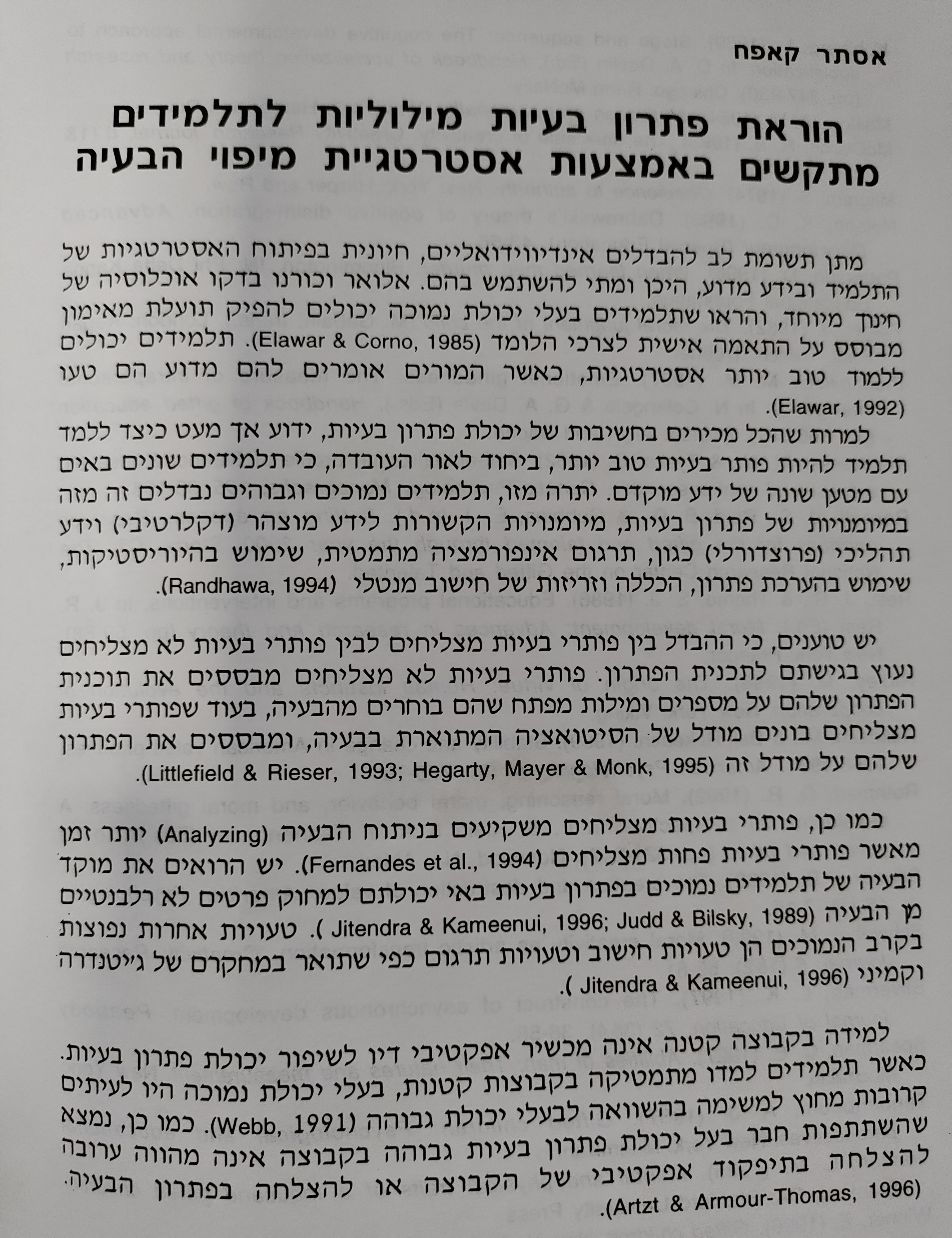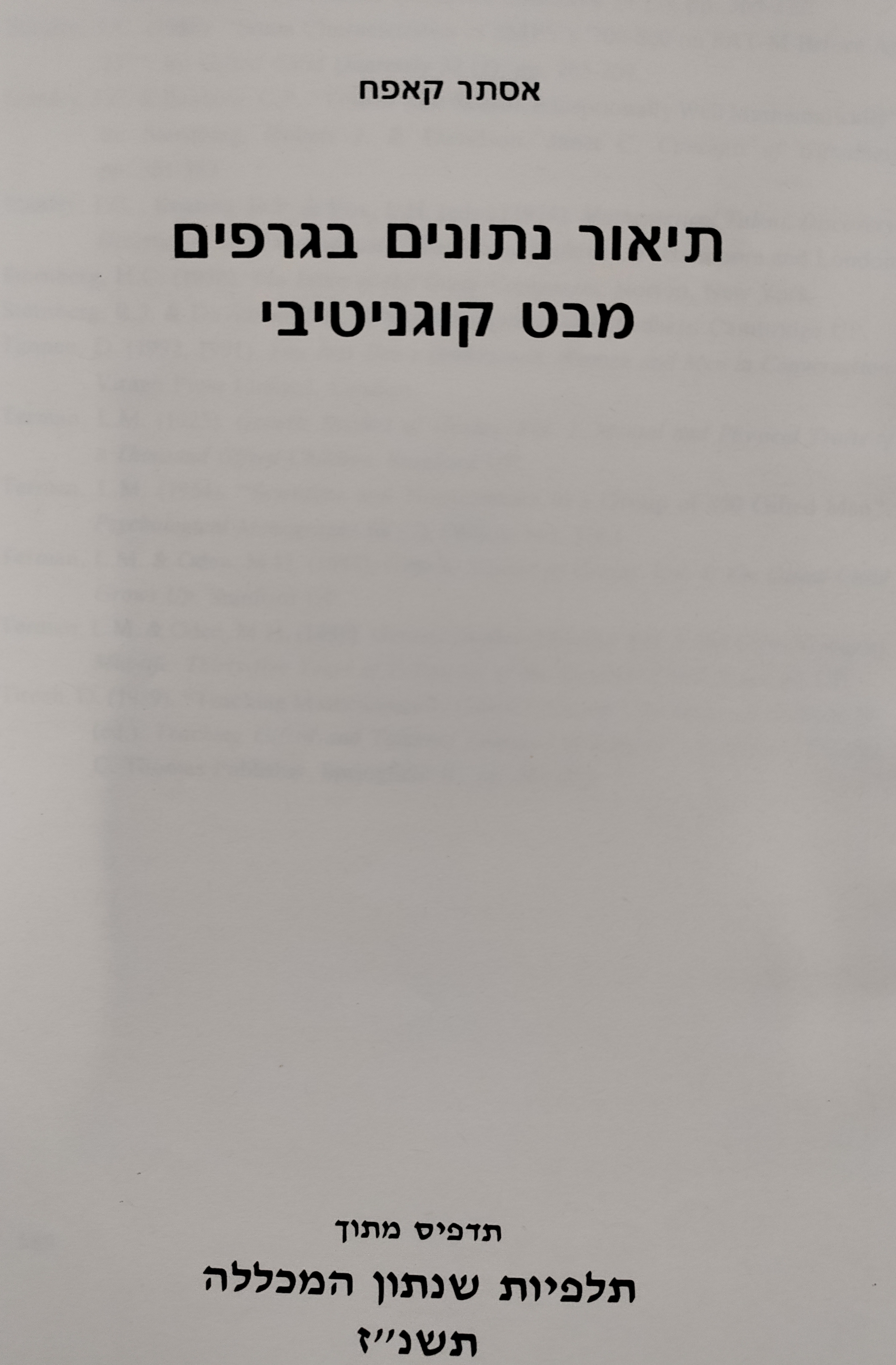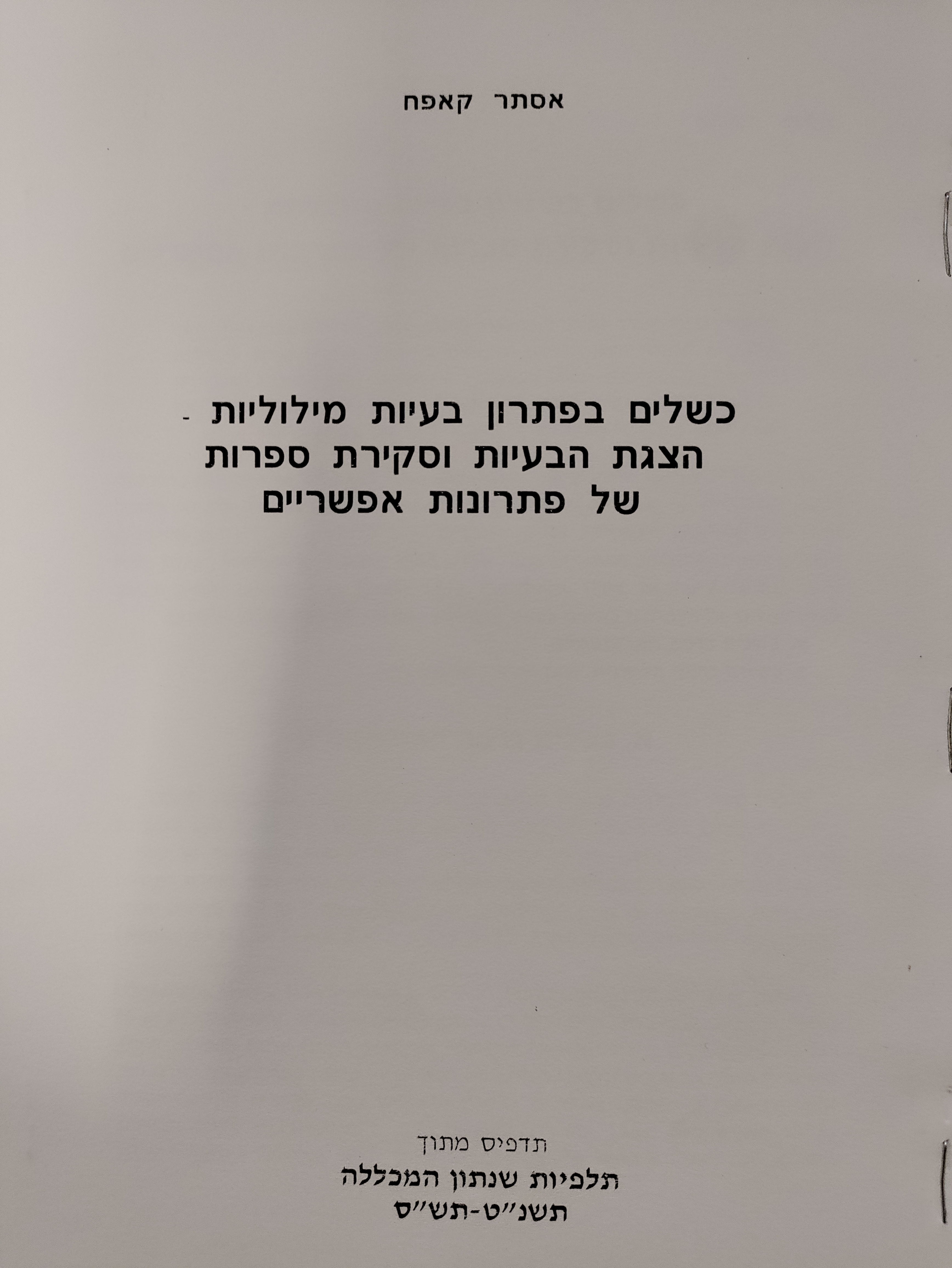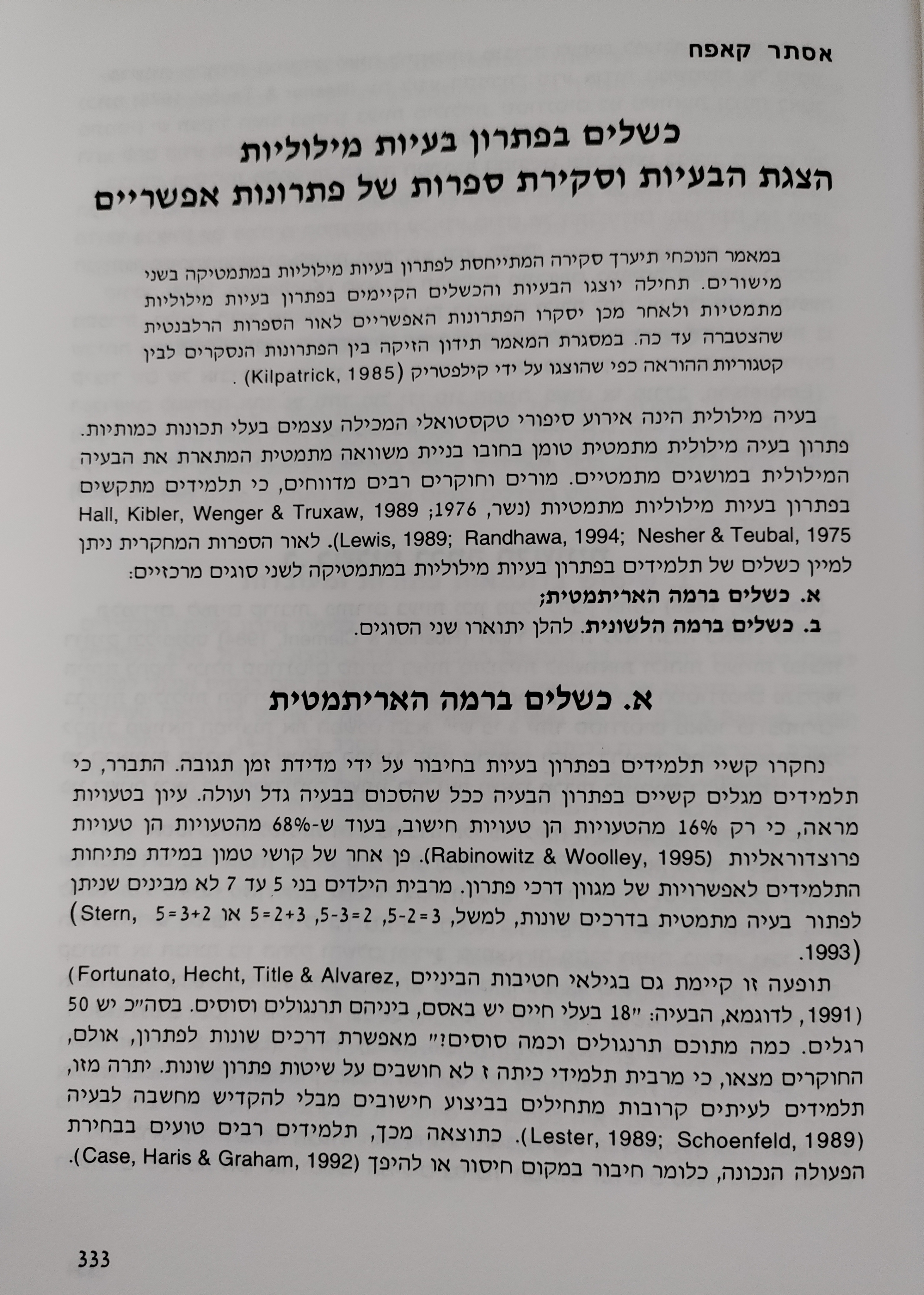|
שם כתב העת / הג'ורנאל |
תקציר המאמר |
|
מגמות, מכון הנרייטה סאלד, ירושלים.
אסתר קאפח: השפעת הנחיה ממוחשבת על תפקוד מטה-קוגניטיבי בתהליך פתרון בעיה מילולית במתמטיקה (עמ' 121-103).
מגמות, (2002) כרך מ"ב, 121-103. |
במחקר הנוכחי מוצע מודל תיאורטי שבו מתוארת הדינמיקה בשלבי התהליך של פתרון בעיה מילולית במתמטיקה תוך התמקדות בבדיקת אפקט התמיכה המטה-קוגניטיבית על תפקוד מטה-קוגניטיבי, והשפעתה על תלמידים ברמות שונות של ידע קודם ובתנאי למידה שונים (למידה בזוגות לעומת למידה אינדיבידואלית). המדגם כלל 441 תלמידי כיתות ח (גילים 13-14). נמצא שקבוצות הטיפול, שקיבלו תמיכה מטה-קוגניטיבית במהלך הפתרון, הגיעו להישגים גבוהים יותר בתפקוד מטה-קוגניטיבי בשלב הייצוג ובשלב הביצוע מאשר תלמידי הקבוצות שקיבלו תמיכה מטה-קוגניטיבית בסיום התהליך או שקיבלו משוב סופי בלבד. לא נמצא הבדל בתפקוד מטה-קוגניטיבי בין תלמידים ברמות שונות של ידע קודם ובין הלומדים באופן אינדיבידואלי לבין הלומדים בזוגות.
|
|
יכולת העברה מבעיה סגורה לבעיה פתוחה
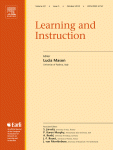
Transfer from structured to open-ended problem-solving in a computerized metacognitive environment
By: Ester Kapah
|
Abstract
A new computerized environment introducing a variety of metacognitive support mechanisms (MSMs) in different phases of the problem-solving process was designed to influence students' transfer from solving structured problems (near transfer) to solving open-ended problems (far transfer). Two hundred and thirty-one students (aged 13-14 years) were randomly drawn from 14 classes. Each class was randomly assigned to one of four groups, and three groups randomly received MSMs: Group A received MSMs during each problem-solving phase and at the conclusion of the problem-solving process; Group B received MSMs only during each problem-solving phase; Group C received MSMs after the conclusion of the problem-solving process. The fourth Group D did not receive any MSM (control group). Results indicated that the MSMs administered to the experimental groups were significantly effective for the development of near and far transfer on both the product and the process compared to the control group. |
|
תמיכה מטה-קוגניטיבית בתהליך פתרון בעיה מילולית
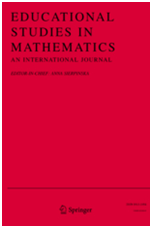
A Metacognitive Support during the Process of Problem Solving in a Computerized Environment
By: Ester Kapah
|
Abstract
A new computerized environment enabling a variety of metacognitive supports in different phases of the problem-solving process was designed to influence students' metacognition during word problem-solving and its effect has been examined in the present research. 441 students (aged 13-14) from eighth-grade integrative classes participated in this study. The pupils were randomly assigned to one of four computerized learning environments, each having a different kind of metacognitive support according to the phase of the problem-solving process: 1) during the solution process and after the completion of the problem-solving process, 2) during the problem-solving process, 3) at the end of the solution process and 4) no metacognitive support. Results indicated that learning environments which provide metacognitive support during the solution process in each of its phases was significantly more effective than learning environments which provide metacognitive support only at the end of the process. Moreover, students with low previous knowledge were more significantly influenced by metacognitive supports than students with high previous knowledge. |
|
פתרון בעיות, יכולת תכנון ותהליכי שיתוף
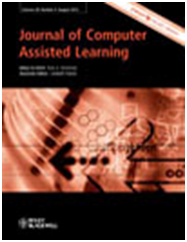
Problem solving, planning ability and sharing processes with LOGO
By: Ester Kapah
|
Abstract
The present research examined the impact of a Logo environment on the level of problem solving control, modification of planning ability and sharing processes in pairs and individual learners. Forty-five fifth-grade students (ranging in age from 10 to 11 years old, who studied in four classes), participated in the study. The subjects were randomly divided into fifteen pairs and fifteen individuals. Results showed significant differences in problem solving control between the Logo environment group and the comparison group. At the end of the treatment the degree of cooperative learning increased in the pairs groups. There was an effective modification of the subjects’ planning ability in both pairs and individuals. |
|
פתרון בעיות בסביבות ממוחשבות

The effects of a problem-solving based Logo environment on children's information processing components
By: Zemira R. Mevarech, Ester Kapah
|
Abstract
Investigated the simultaneous effects of a problem-solving based Logo environment on children's metacomponents, knowledge acquisition components regarding graphing skills, and figural creativity. Participants were 108 5th-grade children (aged 9.8–11.1 yrs) in 4 classrooms. Intact classrooms were randomly assigned to 1 of 2 conditions: a problem-solving based Logo environment called Logo-Stat or a comparison. Significant multivariate effects were found on metacomponents, knowledge acquisition components, and creativity, in favor of the Logo-Stat group. Univariate analyses indicated that knowledge acquisition components and certain aspects of figural creativity (e.g., originality) and metacomponents (e.g., correctness) were more strongly affected by Logo-Stat than others (e.g., fluency, flexibility, and utilization). (PsycINFO Database Record (c) 2012 APA, all rights reserved) |
|
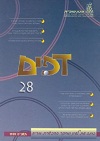
אסטרטגיות קוגניטיביות לפתרון בעיות – מחקר השוואה: אסטרטגיית סכל"ב לעומת אסטרטגיית מיפוי הבעיה
אסתר קאפח
|
תקציר
נבנתה תוכנית התערבות שהתבססה הן על תיאורית השימוש בדוגמאות פתורות והן על מימוש האסטרטגיות. התוכנית הופעלה במדגם של 4 כיתות, 110 נבדקים. הכיתות חולקו אקראית לשתי קבוצות מחקר. השערת המחקר אוששה בשלושה כיווני חקירה. א. בדיקת מבחני קדם ומבחני בתר (p<0/0005 ) ב. בדיקת פרק היישום בתוכנית ההתערבות ע"י שאלו האסטרטגיה (p<0/0005 ) ג. בדיקת תשובות התלמידים בראיונות ביחס לאסטרטגיה (p<0/001 ). התברר כי השימוש באסטרטגיית מיפוי הבעיה סייע לתלמידים לשפר את הישגיהם בפתרון בעיות מילוליות מתמטיות יותר מאשר בשימוש באסטרטגיית סכל"ב.
|
|

סביבה ממוחשבת מטה-קוגניטיבית: גישה חדשנית להתמודדות עם בעיות מתמטיות
אסתר קאפח
|
תקציר
מטרת המאמר הינה להציג סביבה ממוחשבת חדשנית בשם "פתרון בעיות ללא בעיות" ולענות על השאלה האם ניתן לסייע לפותרי בעיות להצליח במשימה וכיצד? סביבה זו חשובה לשלושה סוגי אוכלוסיות: א. למורי המורים המלמדים פתרון בעיות מילוליות במכללות - סביבה ממוחשבת זו מספקת כלים בהוראת נושא הידוע ברמת הקושי שלו. ב. למורים המלמדים בבתי הספר בפועל את הנושא - התוכנה מספקת מאגר של 55 בעיות מילוליות מסוגים שונים, מוכנות ומעובדות להפעלה בכיתותיהם. כמו כן, סביבת עבודה זו מקלה את עומס ההוראה ומותירה בידם זמן פנוי לטיפול באירועים השוטפים במהלך השיעור במעבדה. ג. לתלמידים - התוכנית נועדה לסייע בהתמודדות עם קשיים בפתרון בעיות מילוליות במתמטיקה ומאפשרת הפחתת התלות במורים בתהליך הלמידה. הגברת יכולת ההתמודדות העצמית של תלמידים עם פתרון בעיות מעניקה לתלמידים תחושת בטחון עצמי, ורמת הצלחה גבוהה החשובים.
|
|
תפיסות מוטעות בתהליך בניית גרפים מייצוגים שונים בסביבה ממוחשבת
אסתר קאפח
|
תקציר
המחקר הנוכחי עוסק בשאלות הבאות: כיצד מתמודדים תלמידי כיתה ה עם משימות שרטוט גרפים המתבססות על מיומנויות של מעבר מייצוג מילולי לייצוג גרפי ומעבר מייצוג מספרי לייצוג גרפי (עולה/יורד, מספרי/לא מספרי)? אילו תפיסות מוטעות מגלים תלמידים צעירים במשימות של בניית גרפים? אילו תהליכים קוגניטיביים מלווים תפיסות מוטעות אלה ומהן הסיבות האפשריות להיווצרותן? המדגם כלל 108 נבדקים, 57 תלמידים בקבוצת הניסוי ו- 51 תלמידים בקבוצת הביקורת. התלמידים למדו בארבע כיתות ה' משני בתי ספר יסודיים. בכל בית ספר הכיתות נחלקו אקראית לקבוצת הניסוי שלמדו הבנת גרפים ובנייתם בסביבה ממוחשבת בלוגו, ולקבוצת ביקורת שלמדו הבנת הנקרא בעזרת מעבד תמלילים. הממצאים הצביעו על יתרונה של סביבת לוגו על פני סביבת למידה במעבד תמלילים על יכולתם של הנבדקים להבין גרפים ולבנותם. עיון דיפרנציאלי בסוגי המשימות מראה, כי עיקר הקושי של התלמידים התמקד במשימות השרטוט הדורשות מיומנויות של מעבר מייצוג מילולי לייצוג גרפי, יותר מאשר במשימות שרטוט הדורשות מעבר מייצוג מספרי לייצוג גרפי. כמו כן היה קושי גדול יותר של הנבדקים לשרטט גרף יורד מאשר גרף עולה. אותרו שמונה סוגים של תפיסות מוטעות. הן נדונו בהרחבה מתוך הבחנה בין תיאור התפיסות כפי שהן באות לידי ביטוי בשרטוטים השגויים של התלמידים לבין התהליכים הקוגניטיביים המעורבים בהתהוותן של תפיסות אלה, ומוצעות לכך סיבות אפשריות. מודעות של מורים ומורי מורים לתפיסות מוטעות ולסיבותיהן עשויה לשפר ולכוון את ההוראה, ולמקד את פיתוח תוכניות הלימוד בנושא בניית גרפים ופרשנותם.
|
